On July 11, 2024, Space in Africa hosted an insightful episode of its webinar series, “Feeding Africa – Satellite Data for Food Insecurity in Africa.” This event shed light on the pressing issue of food security in Africa and how cutting-edge space technology is being employed to address this challenge. The webinar featured a panel of experts, including Laure Boudinaud from the World Food Programme (WFP), Edward Boamah from Digital Earth Africa, and Stephen Korir from Amini, moderated by Mustapha Iderawumi from Space in Africa. This post aims to elaborate on the key concepts discussed during the webinar and their implications for food security in Africa.
The Challenge of Food Insecurity in Africa
Africa’s food security challenges are multifaceted, involving climatic, socio-economic, and technological factors. Many African countries have a significant proportion of their populations living in rural areas, primarily engaged in agriculture. However, the food produced often barely meets the needs of these communities, making them highly vulnerable to climate risks and other disruptions.
Role of Earth Observation (EO) Technology
Edward Boamah highlighted the transformative potential of Earth Observation (EO) technology in addressing food insecurity. EO technology provides real-time data on weather patterns, crop health, and land use, offering a comprehensive understanding of the agricultural landscape. This data is crucial for developing early warning systems for natural disasters, supporting precision agriculture, and enhancing market access monitoring. For instance, Digital Earth Africa provides services like the NDVI anomaly, crop masks, and fractional cover data, which are essential for monitoring vegetation and climate conditions.
Laura Boudinaud shared her experiences with the WFP, particularly in using satellite imagery to monitor hard-to-reach areas in conflict zones. A notable project in Mali utilized Sentinel-2 satellite imagery to observe the impacts of insecurity and violence on farming activities. This approach allowed for more precise targeting and organization of emergency response efforts, significantly improving the efficiency and effectiveness of humanitarian interventions.
Innovative Approaches and Technologies
Stephen Korir discussed the critical impact of remote sensing and EO data on improving food security. Traditional methods of assessing food availability often rely on observational techniques and statistics. However, remote sensing and EO data enable the creation of machine learning models for crop type detection and yield prediction. This technology allows for accurate estimations of crop production, helping to manage food distribution and ensure food security.
Korir also highlighted the role of precision farming, which optimizes resource use for better yields. Precision farming involves soil analysis, monitoring crop health, and using technologies like GPS trackers and remote sensing to create productivity maps. These maps reveal spatial variability in nutrient levels, enabling targeted interventions such as fertilization and pesticide application.
The Impact of Climate Change
Climate change poses a significant threat to agriculture in Africa. Edward Boamah emphasized the importance of utilizing EO technology to understand and mitigate the effects of climate change on food security. By integrating EO data with climate information, stakeholders can make informed decisions to promote sustainable agricultural practices and enhance resilience to climate variability.
A specific example from Kenya involved using EO datasets in a mobile app that helps farmers monitor climate conditions. This app provides early warnings about potential floods, droughts, and other extreme weather conditions, allowing farmers to adjust planting schedules and implement water management strategies.
Geo-targeting for Better Humanitarian Responses
Geo-targeting, as explained by Laura Boudinaud, involves using geographical data to assess and address food insecurity more precisely. This approach is invaluable for informing humanitarian responses and estimating the number of people needing assistance. For example, in Mali, Sentinel-2 imagery detected significant cropland abandonment in certain localities, allowing the WFP to plan and implement responses ahead of the lean season.
Future Prospects
The future of addressing food insecurity in Africa lies in leveraging advanced technologies such as generative AI and foundation models. These models can learn underlying patterns from large EO datasets and require less data for tasks like crop type mapping, making them more efficient. Additionally, innovations in extension services can bridge the gap between farmers and the information they need, ensuring that EO data and other relevant insights reach them in an understandable and actionable form.
Conclusion
The webinar “Feeding Africa: Satellite Data for Food Insecurity in Africa” highlighted the immense potential of satellite data and EO technology in tackling one of Africa’s most pressing issues—food security. By providing real-time data, supporting precision agriculture, and enabling better-targeted humanitarian responses, these technologies can significantly enhance food security across the continent. As Africa continues to face the challenges posed by climate change and socio-economic factors, the integration of advanced technologies and innovative approaches will be crucial in ensuring sustainable agricultural practices and resilient food systems.




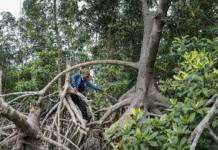
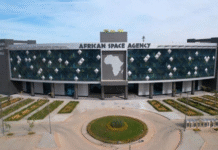

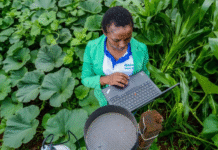
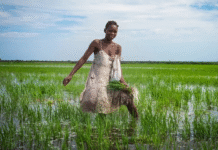
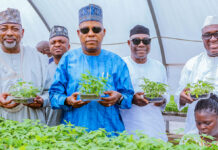






 The African Research (AR) Index is a comprehensive scholarly directory and database focused explicitly on journal publishers that publish and disseminate African research.
The African Research (AR) Index is a comprehensive scholarly directory and database focused explicitly on journal publishers that publish and disseminate African research.

